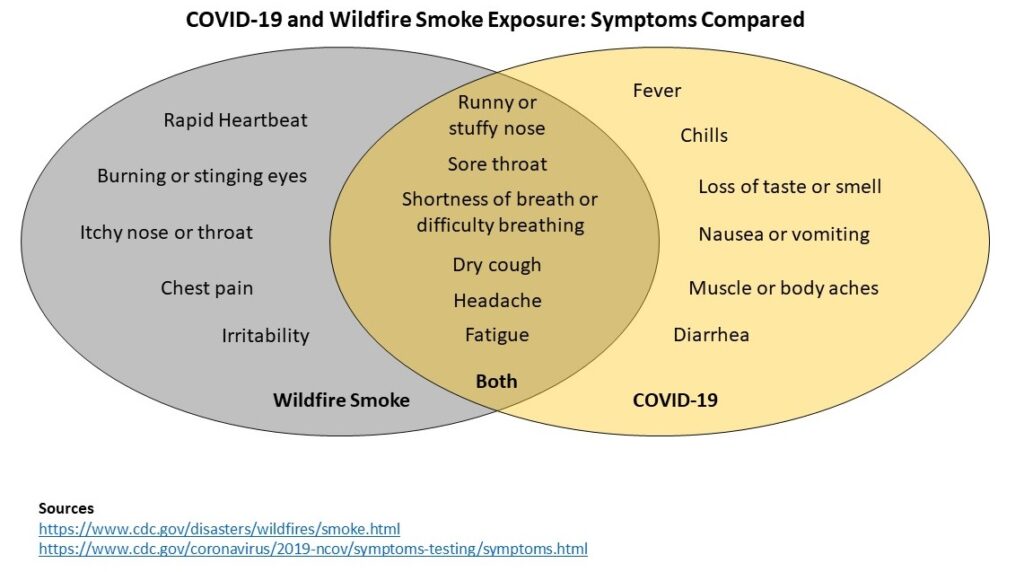A: In dramatic satellite images released yesterday, smoke from wildfires on the West coast is shown stretching across much of the United States. As if 2020 hasn’t already offered us enough uncertainty, wildfire smoke and COVID cause a set of common symptoms, making it hard to tell which you’re facing. Shared symptoms include coughing, wheezing, shortness of breath, sore throat, stuffy or runny nose, tiredness, and headaches. But a few symptoms can be clues as to whether you’re coming down with COVID or if you’re feeling the effects of the devastating fires.
If you have fever, chills, muscle aches, GI symptoms, or loss of taste/smell, it’s more likely COVID than smoke exposure.
Symptoms that are unique to smoke exposure include rapid heartbeat, stinging or burning eyes, asthma attacks, itchy throat or nose, and chest pain. From our own experience living in Southern California, we added irritability to the list of symptoms of smoke exposure.
*** Edited to add: though, rapid heartbeat and chest pain ARE symptoms of myocarditis, which can result from COVID-19… more grey area. Are we having fun yet? ***
We created this chart to help you understand the key differences and overlap between COVID-19 and wildfire smoke exposure symptoms. Common symptoms include some that are life-threatening, such as acute difficulty breathing. If you can’t breathe, have chest pain, or have any other medical emergency, don’t wait! Get emergency help!
Smoke exposure, even when it’s not acute, can be very serious. People at highest risk for poor outcomes from smoke exposure include older adults, pregnant women, children, people with respiratory conditions including asthma, and people with heart conditions.
To protect yourself from smoke exposure, monitor your local air quality on airnow.gov & follow the safety suggestions there. If your air quality is poor, stay indoors and use an air filter, if you have one. Here’s a bit of good news: wearing a mask can protect you from both COVID and smoke. Smoke particles are much smaller than the droplets that are thought to transmit COVID, so you’ll want an N95 mask or respirator mask if possible.
And as always, our advice doesn’t substitute for the advice of your physician. Please get in touch with your doctor with questions and for recommendations specific to your condition.
Stay safe out there.
CDC info on wildfire smoke inhalation
Source of satellite image of the smoke across the country
And here’s an amazing & eerily beautiful animated model of the predicted path of the smoke.



